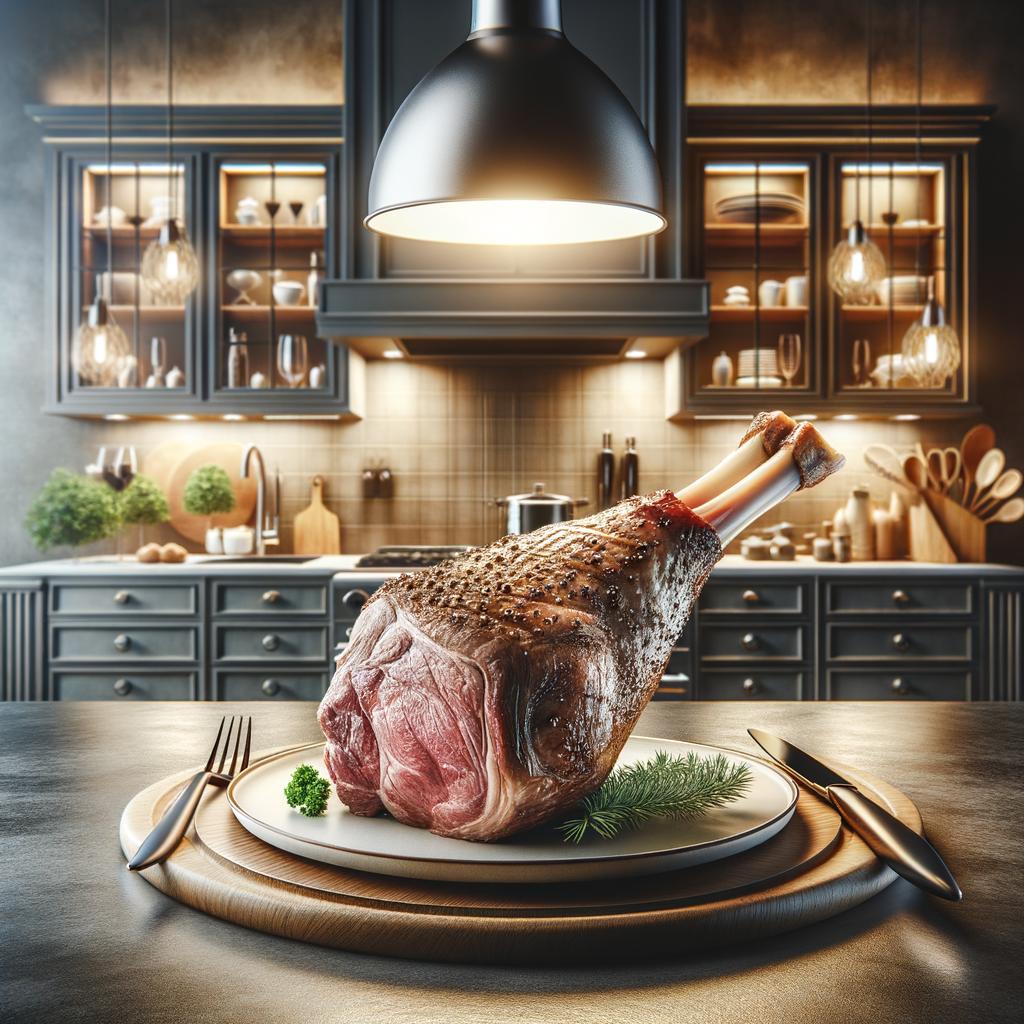Leg of Lamb

Description
The leg of lamb is a prized cut of meat, sourced from the hindquarters of the animal. It is a robust, muscular piece, often sold bone-in, and covered in a thin layer of fat. Its appearance is enticing, with a rich, deep red color that promises a feast for the senses. The texture of the leg of lamb is firm yet tender, and it becomes incredibly succulent when cooked properly. The flavor profile of this cut is distinctively rich and slightly gamey, with a sweetness that is enhanced by its marbling. What sets the leg of lamb apart from similar ingredients is its versatility - it can be roasted whole, cut into steaks, or slow-cooked to fall-off-the-bone perfection.
Primary Uses
The leg of lamb is a culinary superstar, playing a central role in a variety of cuisines from the Mediterranean to the Middle East. It is traditionally roasted whole for festive occasions, seasoned with garlic, rosemary, and thyme. In Greek cuisine, it is often marinated in lemon and oregano and then slow-cooked to create a melt-in-your-mouth delicacy. The leg of lamb also shines in Moroccan tagines, where it is paired with dried fruits and aromatic spices. Beyond its culinary uses, the leg of lamb holds cultural significance in many societies, symbolizing abundance and celebration.
History
The leg of lamb has a storied history, dating back to ancient times. It was a staple in the diet of early civilizations in the Middle East, where sheep were among the first animals to be domesticated. Over time, the leg of lamb became a symbol of hospitality and generosity, often served to honor guests. The tradition of roasting a whole leg of lamb for special occasions has been passed down through generations, evolving in flavor and preparation techniques but retaining its central role in celebratory feasts. There are countless tales associated with the leg of lamb, from myths of Greek gods feasting on it in Olympus, to folklore of shepherds roasting it over open fires under starlit skies.
Nutritional Information
The leg of lamb is not only delicious but also nutritious. It is a rich source of high-quality protein, essential for growth and repair in the body. It also provides a wealth of vitamins and minerals, including iron, zinc, and vitamin B12, which are crucial for energy production and immune function. Despite its richness, the leg of lamb has less fat and fewer calories compared to other cuts of meat, making it a healthier choice for those mindful of their diet. Compared to similar ingredients like beef or pork, lamb tends to have a higher concentration of omega-3 fatty acids, which are beneficial for heart health. However, as with all meats, moderation is key to maintain a balanced diet.

